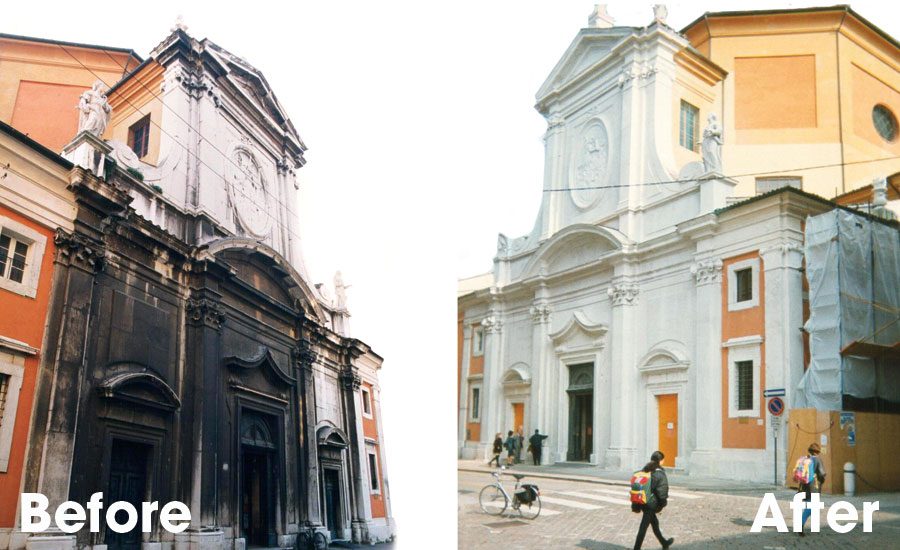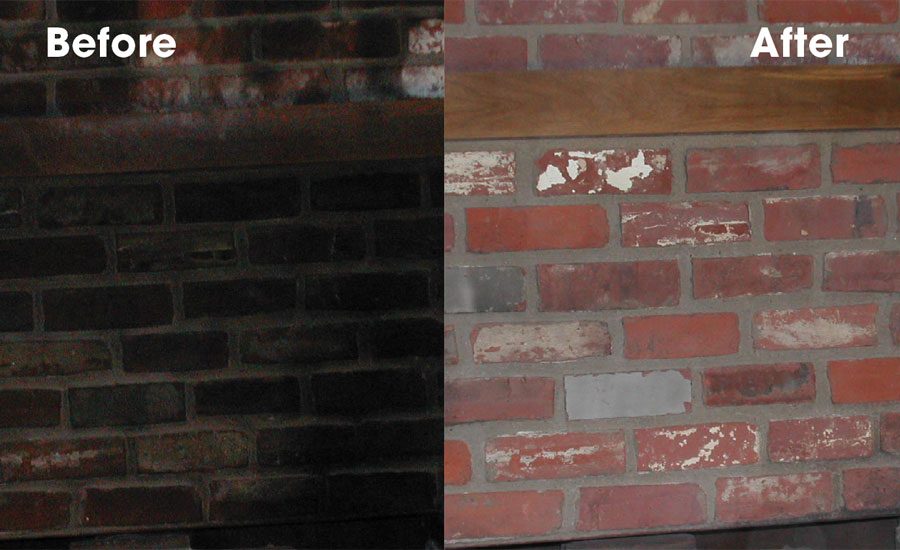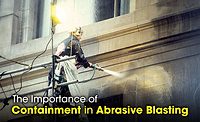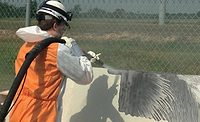Is Non-Destructive Cleaning Critical?
Exploring the benefits of soda blasting.














In the world of restoration, two of the most difficult jobs are fire and mold remediation. Both of these jobs can be made much simpler and safer by abrasive blasting with baking soda (Sodium Bicarbonate).
Baking soda abrasive blasting originated back in the 1980’s during the mammoth restoration project of the Statue of Liberty in New York Harbor. During the planning of this project, Church & Dwight Co., Inc. maker of ARM & HAMMER™ baking soda was contacted by the project engineers looking for a way to remove the final two interior layers of cold tar epoxy all without damaging Lady Liberty’s delicate copper skin. Through trial and error, the engineers tested many different methods and blasting abrasives without success. Harder blasting abrasives were damaging and blowing holes through Lady Liberty’s delicate copper skin. The project engineers then had the idea to try abrasive blasting with baking soda and soon discovered that baking soda had extraordinary cleaning properties all while not causing any surface damage. Following this success, Church & Dwight Co., Inc. launched the first baking soda blasting abrasive, ARMEX™.
What is Abrasive Blasting?
Abrasive blasting is pressurized air or water containing a suspended particulate (the abrasive media) that is projected at a surface for the purpose of removing a coating or contaminant. How does baking soda blasting work? Baking soda blasting can be done wet or dry. Both methods require compressed air or water to deliver the baking soda. What makes baking soda so different than other hard abrasives is that baking soda will not damage substrate materials. This is because unlike hard abrasives when a baking soda crystal hits the surface it explodes on contact with the surface and does not penetrate into the surface. This explosion removes contaminates but does not remove surface materials. When hard abrasives hit the surface, the particle penetrates into the surface of the substrate removing both contaminate and surface materials. The removal of surface materials may not be a bad thing if you want a profile on the surface or if removal of substrate materials is not a concern. However if you want to preserve the surface, the only abrasive you should be using is baking soda. Baking soda cleans and preserves surfaces of multiple substrates including wood, masonry materials, PVC, plastics, metals, fiberglass, glass and stone virtual all building materials.
Why use baking soda for are fire and mold remediation? Some remediation companies use caustic chemicals with hand scrubbing and sanding. These types of solutions are not environmentally friendly and also can prove to be hazardous to both the workers and occupants on job sites. Furthermore, these methods are also very inefficient when you look at the labor costs. Baking soda abrasive blasting is fast, so fast it can dramatically reduce labor costs. An added bonus, baking soda blasting deodorizes the affected area. Which can aid in the removal of musty or smoky odors, it deodorizes just like the yellow box of ARM & HAMMER™ baking soda you put in your refrigerator to remove odors. Baking soda abrasive blasting is environmentally friendly, fast, effective and a safe cleaning method. Fire damage is very difficult and labor intensive to clean up. However with baking soda blasting removing smoke damage, soot and char can be accomplished very quickly. So fast in fact you can clean up to four times faster than other traditional methods. Baking Soda provides a more thorough cleaning as well because it allows you to clean deep into corners, behind duct work and in areas where you were previously unable to access by hand. Baking soda because of it non-destructive properties will allow you to blast around window frames without affecting the glass. As well as baking soda will allow you to save structures and framing that in the past might have needed to been replaced providing a great savings in both replacement material costs and labor. Just like in fire remediation mold remediation has the same benefits when baking soda blasting. When removing mold with baking soda it provides an increased time savings and efficiency of cleaning, access too hard to reach areas that are difficult to access with your hand, or access to areas like crawl spaces and under decks. As well as the non-destructive properties of baking soda allowing you to salvage materials that previously were needed to be tore out and lastly the use caustic chemicals with hand scrubbing and sanding are eliminated. Don’t forget about baking Soda’s odor eliminating properties make it a unique media for both fire and mold restoration.
Keep in mind that not all baking sodas are the same. You should be on the lookout for a product that is non-hazardous and non-toxic. Plus, is it water soluble, pH neutral, non-flammable, and silica-free? Some options are even approved as cleaning agents in food service areas.
There are also different granule sizes involved when choosing a baking soda. The micron size will determine the degree of aggressiveness of cleaning with 270 microns providing the highest/extreme level of cleaning and 70 microns for more light/delicate cleaning. You also want to be sure to have an aid that will help prevent clogs in the blasting equipment. Baking soda is a natural desiccant and loves to absorb water. Without these flow aids and advance moisture control additives, traditional baking soda would clog blasting equipment.
With the non-destructive properties and environmentally friendliness of baking soda, more efficient labor savings then traditional methods and the deodorizing ability, it is easy to understand why more and more fire and mold restoration companies are choosing baking soda blasting over other restoration methods.
Looking for a reprint of this article?
From high-res PDFs to custom plaques, order your copy today!













